Find Your New Favorite Animal
Our animals come from many parts of the world. We have more than 3,700 animals representing more than 350 different species at Nashville Zoo.
Featured Animals

Arizona Blonde Tarantula
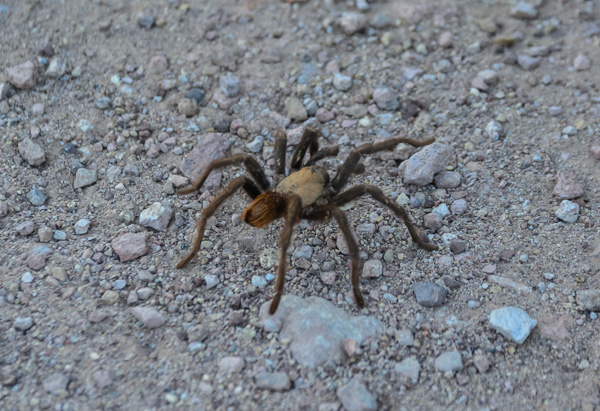
Conservation Status:
Not Evaluated
Fact:
The Arizona blonde tarantula is from southern Arizona and northern Mexico and is known for its "blonde" hair and calm demeanor. Females are solid tan, while males have black legs, a copper carapace, and a reddish abdomen. The average lifespan is about 24–30 years for females and only 5–10 years for males.
Black Widow Spider
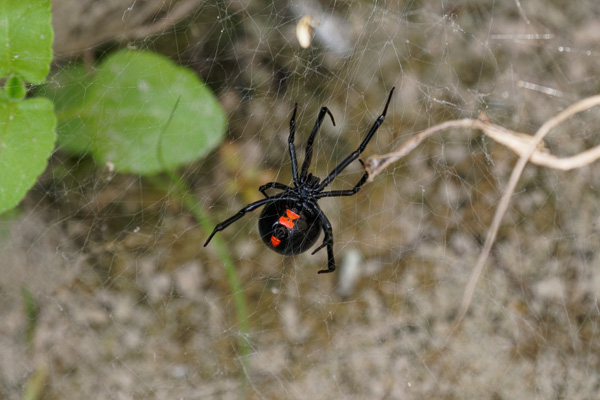
Conservation Status:
Not Evaluated
Fact:
Black widows are native to North America. Females are easily recognized by their distinctive red hourglass markings and are notorious for sometimes eating their mates after reproduction. While their venom can cause pain and other symptoms, it is rarely fatal to healthy humans. These spiders feed on small insects, including many that we consider pests.
Brown Recluse Spider

Conservation Status:
Fact:
Brown recluse spiders are small, venomous arachnids known for their violin-shaped marking on their backs. Found primarily in the central and southern United States, they prefer dark, undisturbed areas like closets and basements. While their bite is rarely fatal, it can cause serious skin reactions and requires medical attention.
Cavespring Crayfish
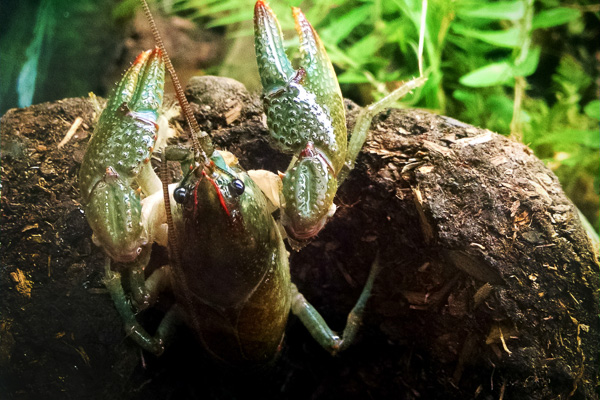
Conservation Status:
Least Concern
Fact:
There are more than 600 species of crayfish worldwide and Tennessee is home to more than 90 different species. The cavespring crayfish is a freshwater crayfish native to Alabama, Kentucky, Tennessee, Ohio, and Indiana. It is a cave-dwelling species found in caves and surface locations across the Cumberland Plateau.
Desert Hairy Scorpion
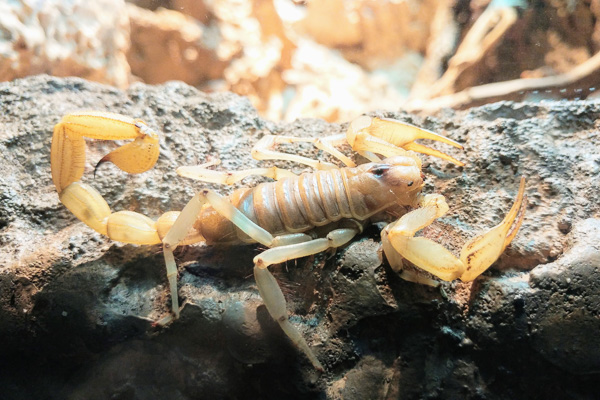
Conservation Status:
Not Evaluated
Fact:
Desert hairy scorpions, the largest in North America at 4-7 inches long, are named for their sensory hairs, which help detect prey. Although venomous, their sting is comparable to a bee sting and not fatal to humans. Like all scorpions, giant desert hairy scorpions fluoresce or glow under black light. Fluorescent compounds in the exoskeleton are thought to protect the scorpions from UV radiation.
Red Knee Tarantula
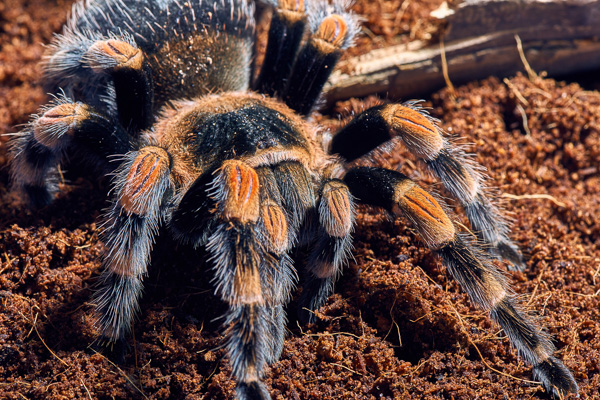
Conservation Status:
Near Threatened
Fact:
Red knee tarantulas are found along the Pacific coast of Mexico. These tarantulas dig deep burrows under rocks and tree roots, providing protection from predators and enabling them to ambush prey. Females spend most of their lives in these burrows, which feature a single entrance and lead to molting and feeding chambers. Tarantulas are venomous but their venom is being studied as a potential painkiller to replace opioids.
Trinidad Giant Cockroach
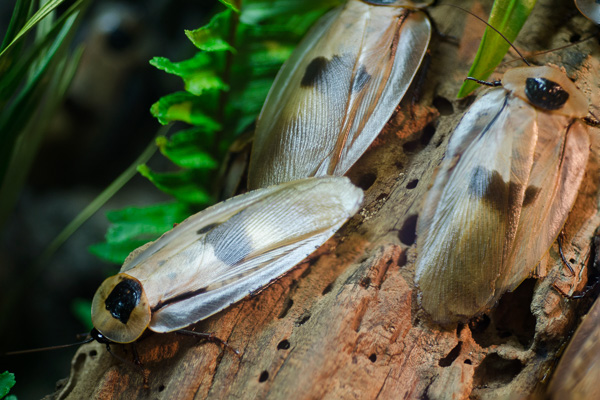
Conservation Status:
Not Evaluated
Fact:
The Trinidad giant cockroach is one of the world's largest cockroaches. They have flattened, brown bodies with black markings, allowing them to hide in cracks. Native to the Neotropics, they inhabit caves, rainforests, and areas with high moisture and low light across Mexico, Central America, and parts of South America and the Caribbean. These cockroaches play an essential role in breaking down dead plant matter and are important to their ecosystems.
Featured Animals

African Clawed Frog
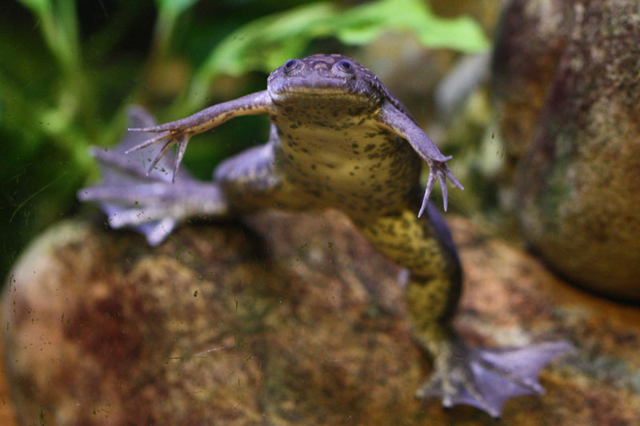
Conservation Status:
Least Concern
Fact:
African clawed frogs get their name from the three short claws on their hind feet that are used to stir up mud to hide from predators! Although native to Africa, this species is considered invasive in the United States due to the illegal pet trade.
Axolotl
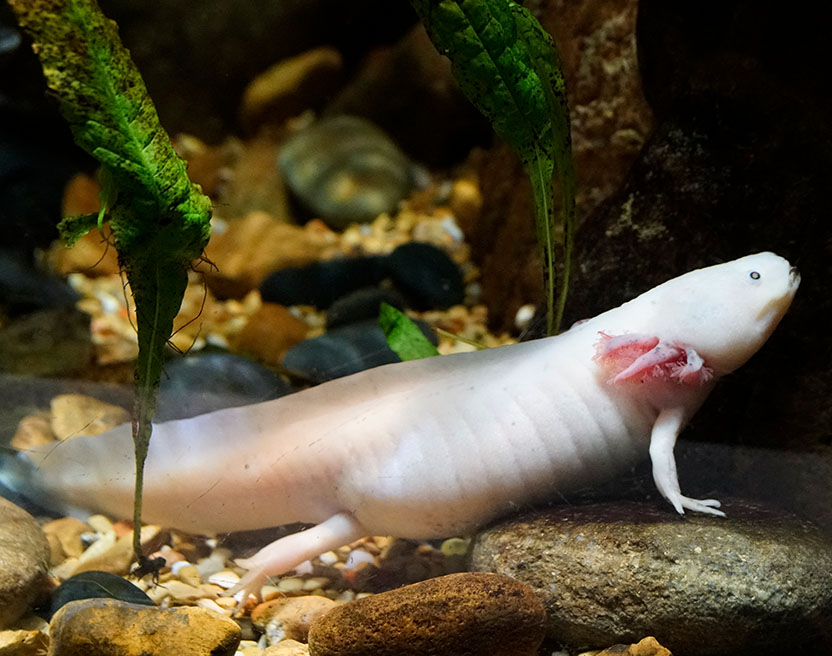
Conservation Status:
Critically Endangered
Fact:
Pronunciation: ACK-suh-LAH-tul Axolotl were the top predator in their ecosystem until the introduction of competing predatory fish and the disappearance of Lake Chalco, near Mexico City, Mexico. Axolotl are now classified as critically endangered.
Eastern Hellbender
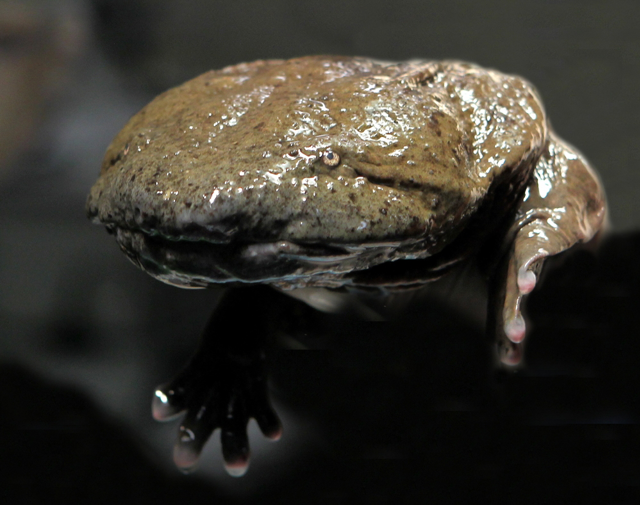
Conservation Status:
Vulnerable
Fact:
Eastern hellbenders are the largest salamander species in the state of Tennessee. Hellbenders rarely leave the water and breathe through their skin, making them extremely sensitive to climate change and pollution.
Panamanian Golden Frog
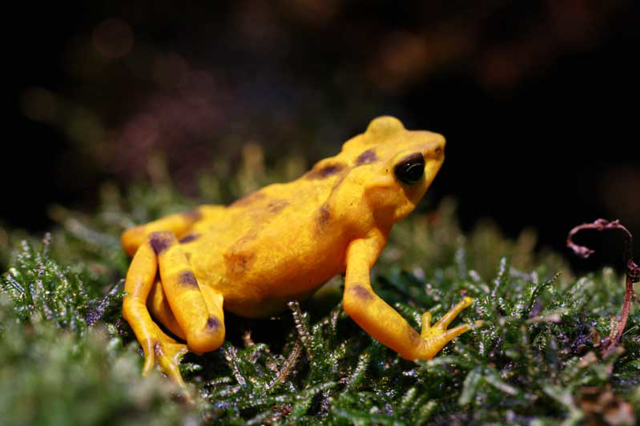
Conservation Status:
Critically Endangered
Fact:
Unlike most frogs and toads, Panamanian golden frogs attract mates through visual displays, including twitching, stamping, hopping and waving. This species was decimated by an aquatic fungal pathogen and is now assumed to be extinct in the wild.
Poison Dart Frog
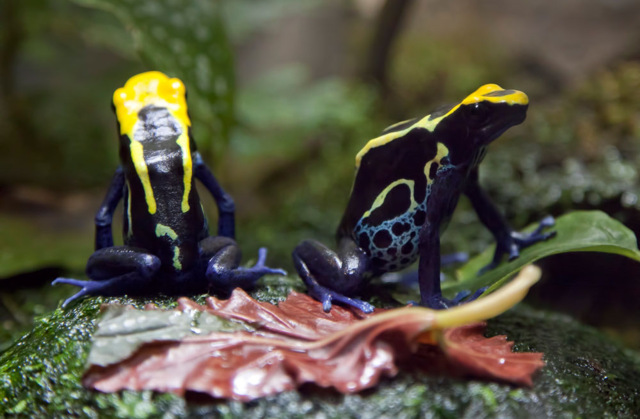
Conservation Status:
Least Concern
Fact:
This brightly colored frog is one of more than 100 species of poison dart frog. The Emberá Chocó, an indigenous people of western Colombia, use the poison of some species to coat the tips of the blow darts they use for hunting, giving this frog it's name!
Puerto Rican Crested Toad
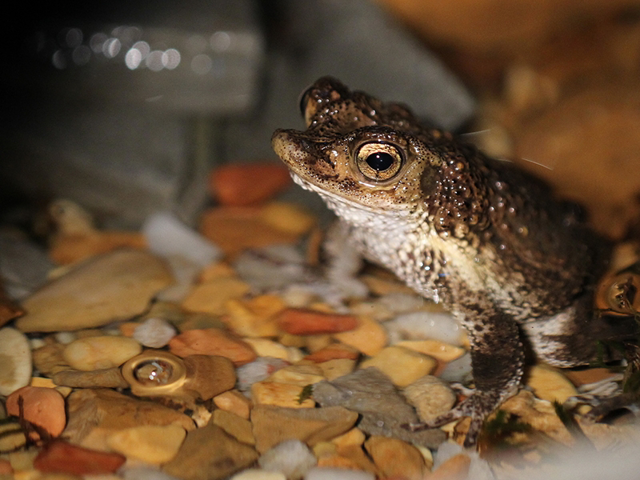
Conservation Status:
Endangered
Fact:
The Puerto Rican crested toad is the only toad native to Puerto Rico. The species became the first amphibian placed on a Species Survival Plan® in 1984. Nashville Zoo has sent more than 15,000 tadpoles to Puerto Rico for release since 2012.
Surinam Toad
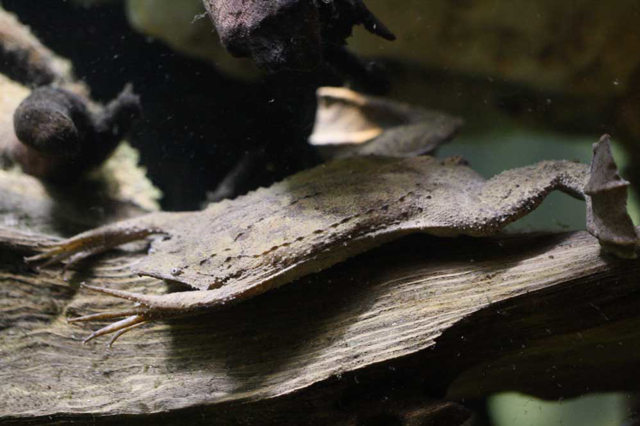
Conservation Status:
Least Concern
Fact:
Despite its name, the Surinam toad is actually a fully aquatic frog with an interesting reproduction strategy. Females carry fertilized eggs under the skin on their backs. The young stay under the female's skin until they are fully formed froglets!
Featured Animals

Black Arowana
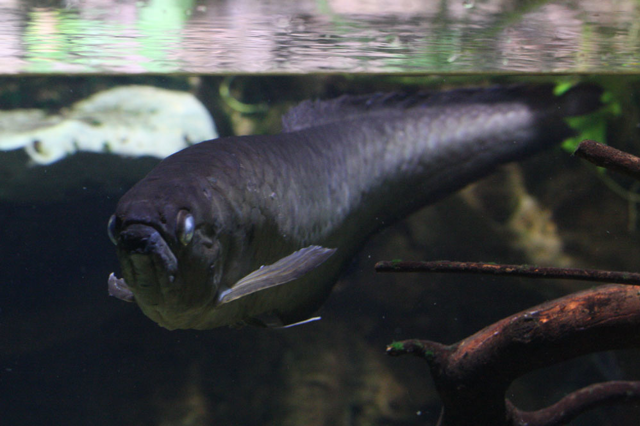
Conservation Status:
Least Concern
Fact:
Black arowana are large freshwater fish from northern South America. They are sometimes referred to as ""monkey fish"" for their impressive ability to jump out of the water to catch prey!
Blue Discus
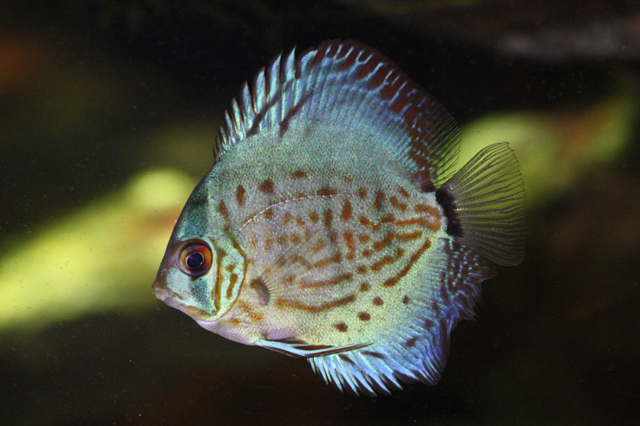
Conservation Status:
Least Concern
Fact:
Discus can be found in many colors, and their stripes provide a means of communication and act as camouflage from predators. Schools of discus will also avoid predators by hiding under debris.
Blue Tang Surgeonfish
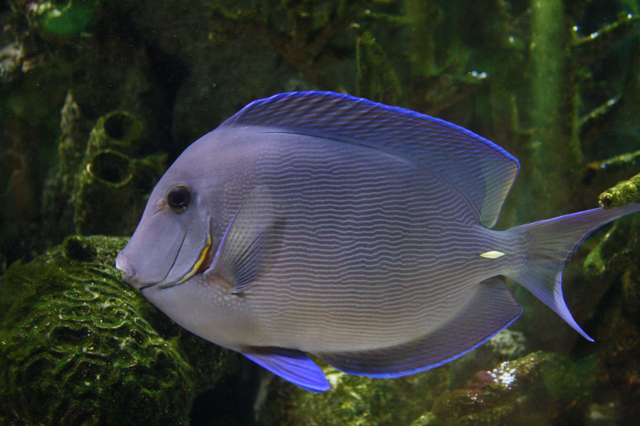
Conservation Status:
Least Concern
Fact:
Blue tangs are one of the 80 different species of surgeonfish, which are named for the sharp spines on the sides of their tail. Blue tang serve an important role in their ecosystems by constantly grazing on algae and preventing overgrowth.
Bluehead Wrasse
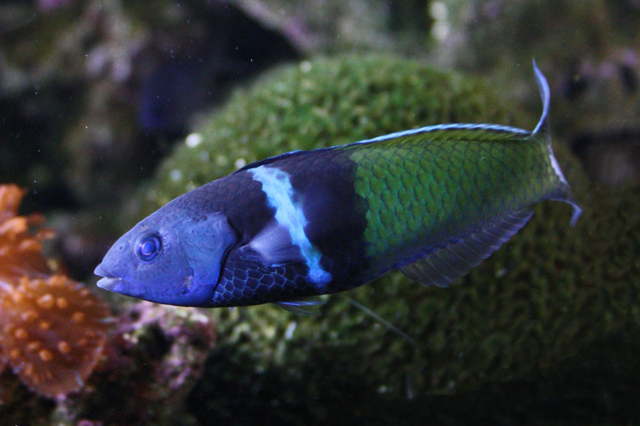
Conservation Status:
Least Concern
Fact:
Bluehead wrasse are one of the most studied reef fish due to its complex mating system that includes both group and pair spawning events. All bluehead wrasse are born as females, with some individuals becoming males as they mature.
Jaguar Cichlid
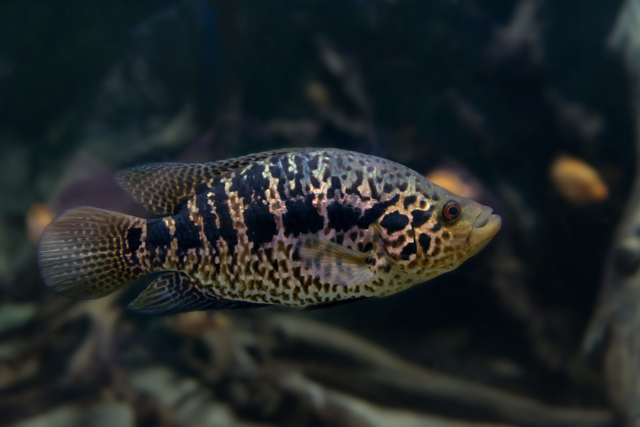
Conservation Status:
Least Concern
Fact:
Unlike other cichlids, the jaguar cichlid does not present a permanent pattern until fully mature. Young jaguar cichlids are patterned with several dark bars, then as they age, they lose the bars and develop the more familiar “jaguar” pattern.
Lined Seahorse

Conservation Status:
Vulnerable
Fact:
Seahorses are monogamous and usually have one mate during their lifetime. During a mating dance the female will pass eggs to the male. Males hold fertilized eggs in a pouch until they emerge about 20 days later as miniature versions of an adult.
Lionfish
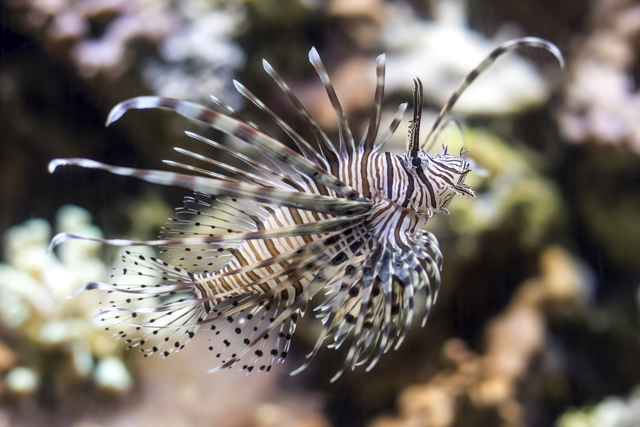
Conservation Status:
Least Concern
Fact:
The venomous lionfish uses its 18 needle-like dorsal fins and a painful sting to defend itself. Lionfish were introduced into the Atlantic Ocean where they spread rapidly and are now an invasive species that are a major threat to biodiversity.
Ocellate River Stingray
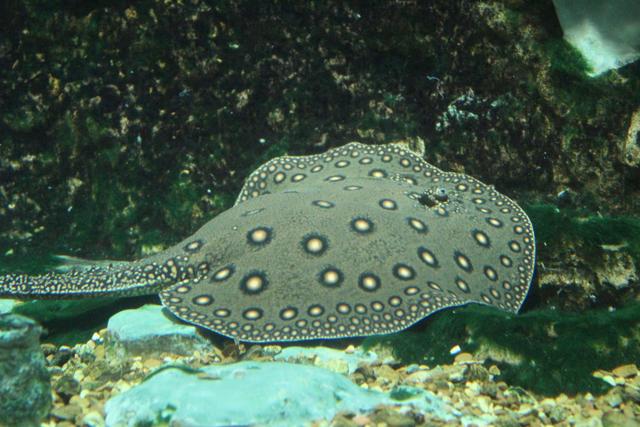
Conservation Status:
Unknown
Fact:
The ocellate river stingray is one of the most widespread freshwater stingrays, migrating within South American waterways. Stingrays are ovoviviparous, meaning a female will develop and hatch eggs inside of her then have a live birth.
Piranha
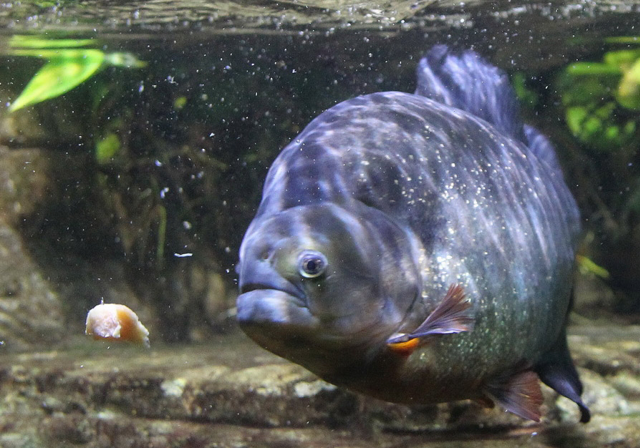
Conservation Status:
Unknown
Fact:
Known for their sharp teeth, the piranha's ferocious reputation is often exaggerated. Generally, piranha eat small prey or scavenge rather than kill large prey. Feeding frenzies are also rare, usually occurring when a group feels threatened.
Redhead Cichlid
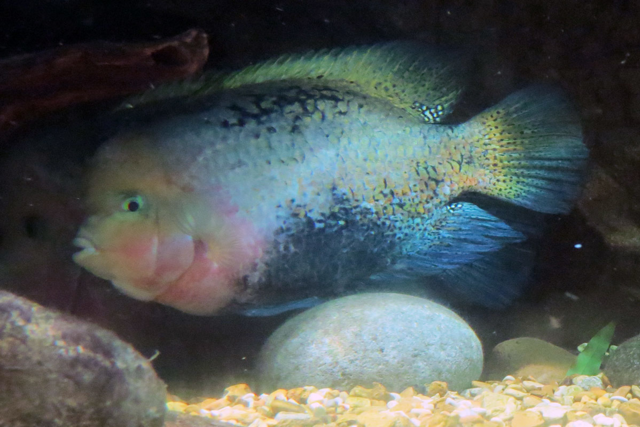
Conservation Status:
Unknown
Fact:
Redhead cichlids are native to Mexico and Guatemala, but have been introduced all over the world, likely by humans releasing pet fish into local waterways, and the impact of these introductions to the native wildlife is currently unknown.
Red-Tail Triggerfish
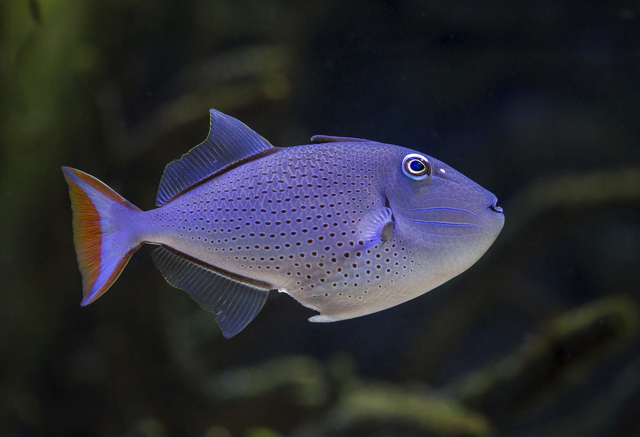
Conservation Status:
Least Concern
Fact:
Red-tail triggerfish are one of almost 40 different species of triggerfish. They frequently live in patches of plants called sargassum and will move to deeper waters as they get older.
White-Blotched River Stingray
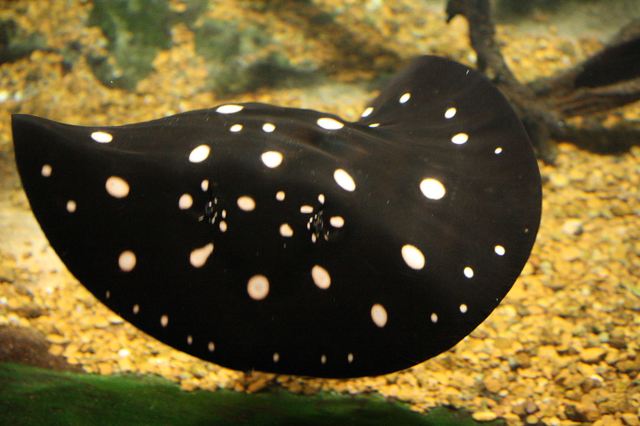
Conservation Status:
Vulnerable
Fact:
The white-blotched river stingray is only found in the Xingu River basin in South America. The distinctive blotched pattern on this species helps camouflage it in the sun-dappled streams where it lives.
Featured Animals

Bird Species in the Aviary

Conservation Status:
Species Dependent
Fact:
There are around a dozen species of birds from Central and South America and Africa living in the Aviary inside Unseen New World.
Blue-bellied Roller
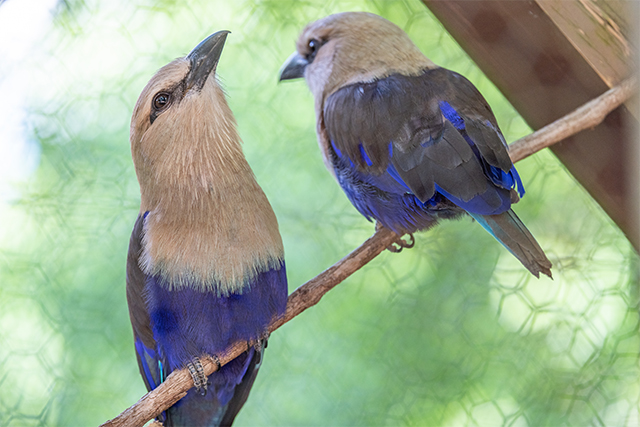
Conservation Status:
Least Concern
Fact:
Native to Africa, blue-bellied rollers are named for their colorful blue stomachs and their elaborate courtship rituals which involve loud vocalizations and acrobatic flight.
Caribbean Flamingo
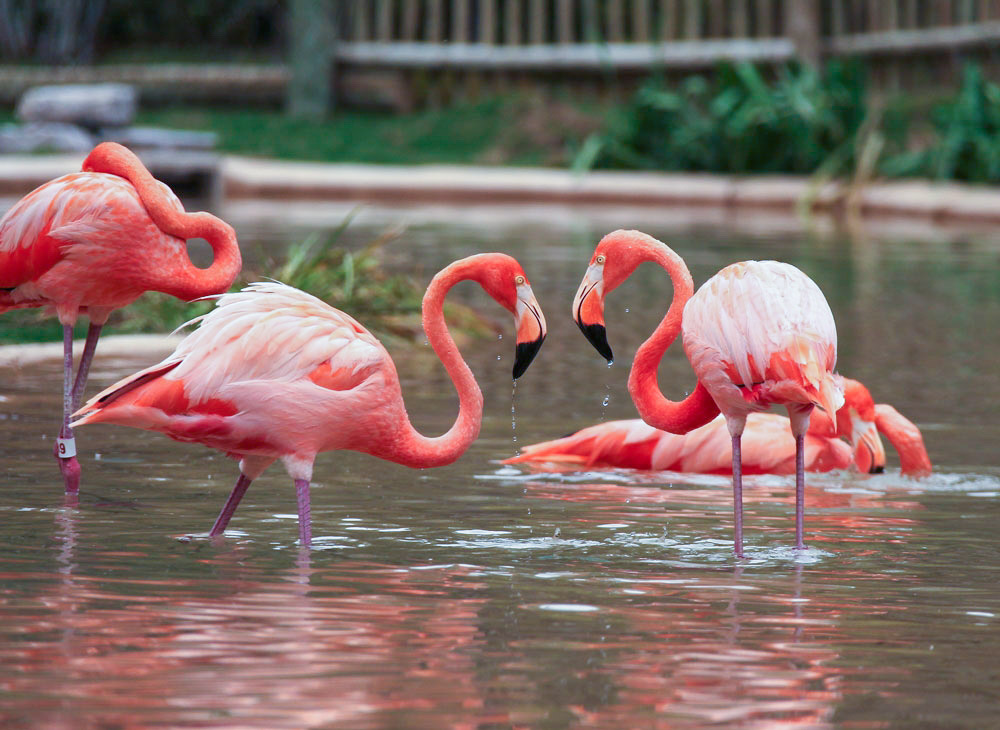
Conservation Status:
Least Concern
Fact:
Caribbean flamingos are the most brightly colored of the six flamingo species. Their color comes from the carotenoid pigments in their diet. Flamingo chicks have grey feathers and do not get their characteristic coloration until about 2 years of age.
Cassowary
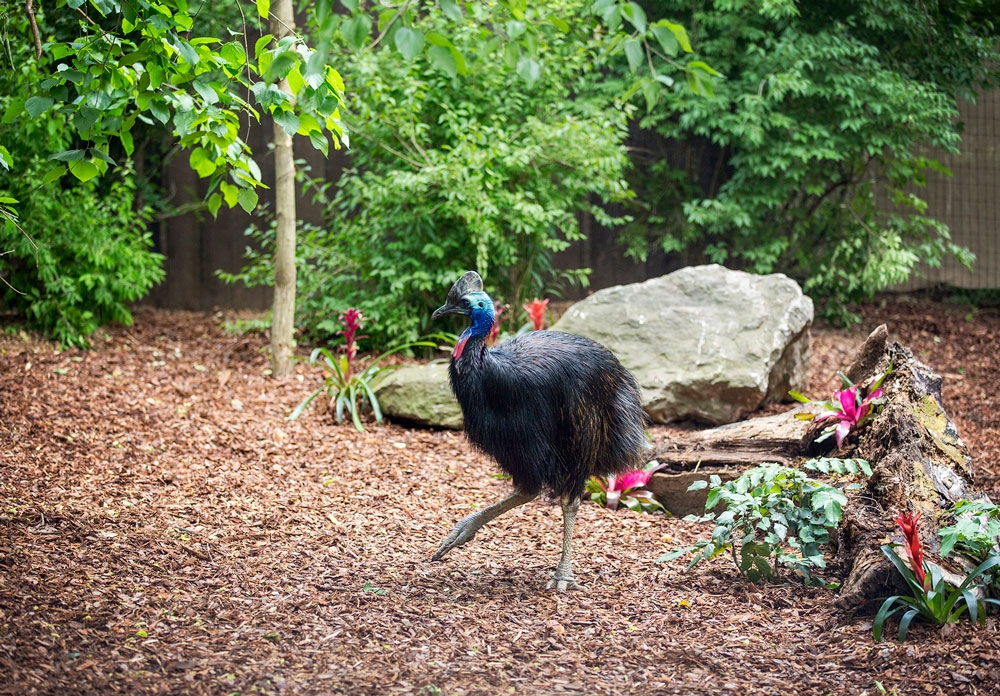
Conservation Status:
Least Concern
Fact:
Double-wattled cassowaries are solitary birds that live in some of the oldest rainforests in the world known as the “wet tropics"" in Northern Australia and New Guinea. They are the second largest birds in the world after the ostrich.
Chilean Flamingo
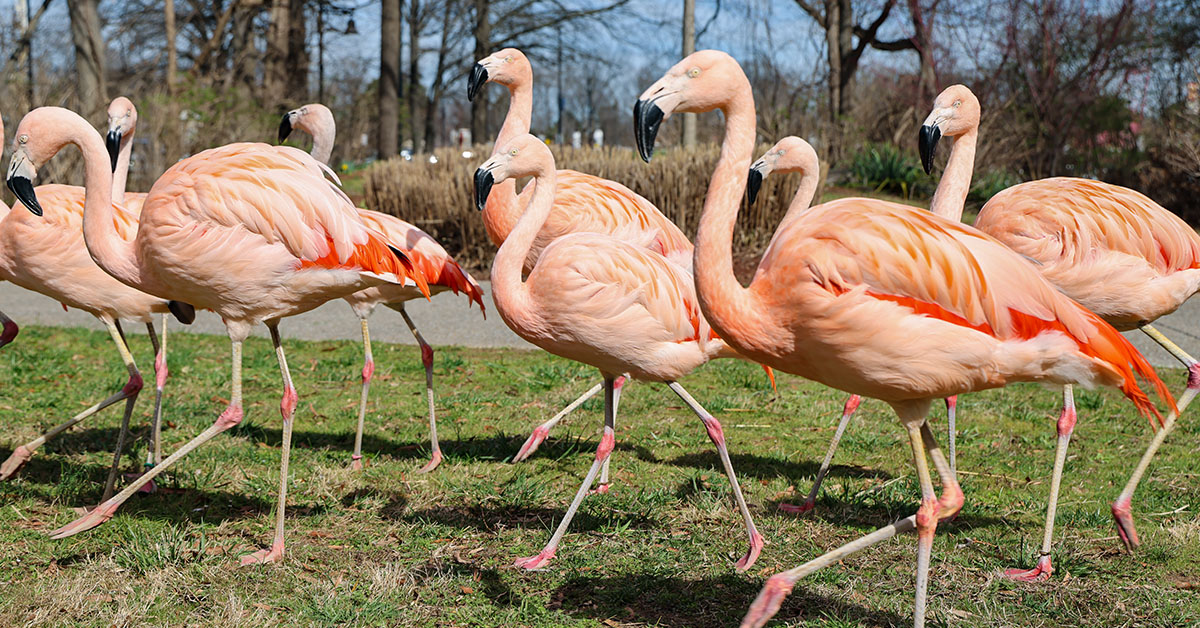
Conservation Status:
Near Threatened
Fact:
Chilean flamingos are found throughout parts of South America. The plumage of the Chilean flamingo is paler than other species. Both male and female Chilean flamingos feed their young with a self-produced, milk-like secretion called crop milk.
Common Barn Owl

Conservation Status:
Least Concern
Fact:
Barn owls are the most widespread owl species and can be found on every contitent except Antarctica. They are renowned for their ability to hear extremely soft noises and can capture prey in complete darkness using sound alone.
Greater Flamingo
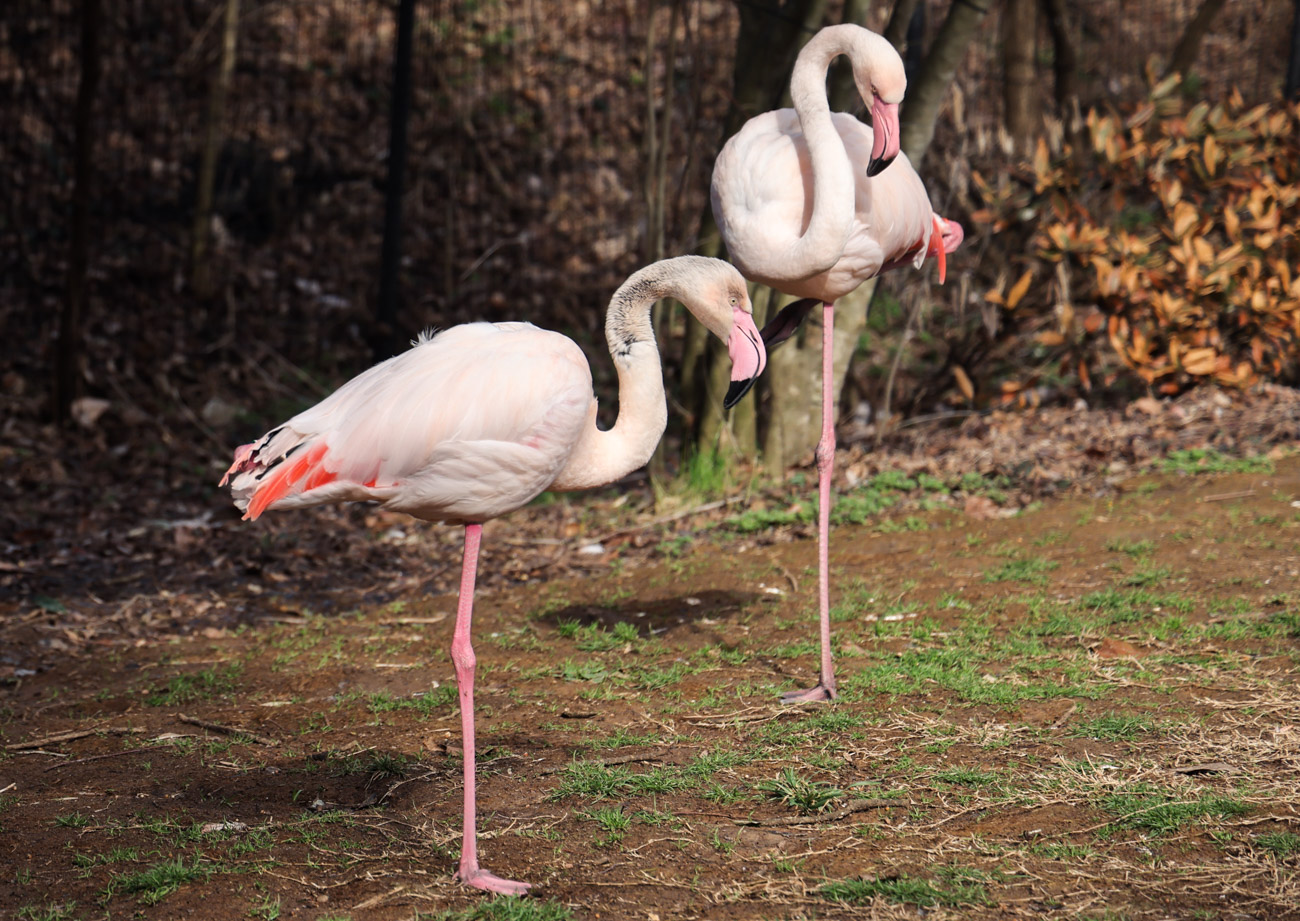
Conservation Status:
Least Concern
Fact:
The Greater flamingo is the largest and most widespread species of flamingo, with its native range spanning across southwest Europe, Africa and parts of Asia. They feed mostly on invertebrates such as brine flies, shrimps, and mollusks.
Hyacinth Macaw
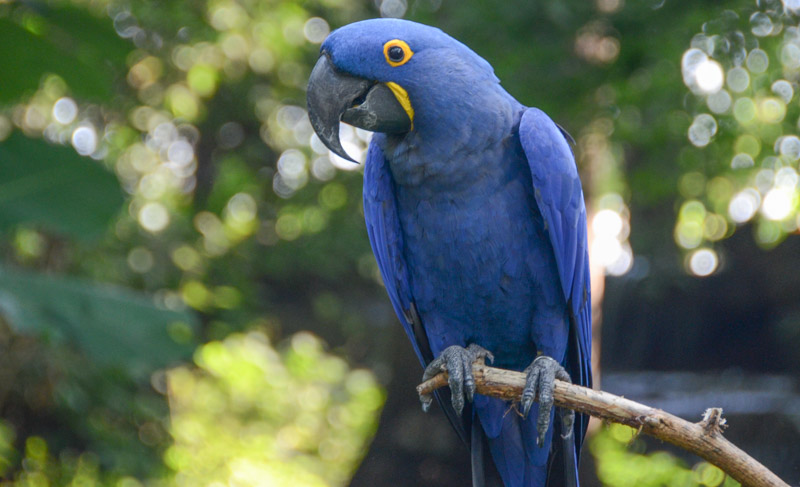
Conservation Status:
Vulnerable
Fact:
Hyacinth macaws are the largest parrot species and will use their powerful beaks to break open palm nuts, their main food source. They are threatened in the wild by the pet trade and habitat loss.
Lorikeet
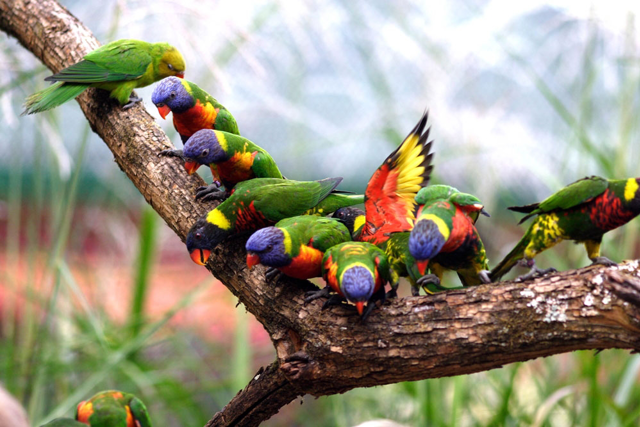
Conservation Status:
Species Dependent
Fact:
Lorikeets are very loud and social parrots, and roost at night in groups of up to thousands. Lorikeets use their long tongue covered in brush-like papillae to gather pollen and nectar from flowers, making them important pollinators in their habitats.
Maleo
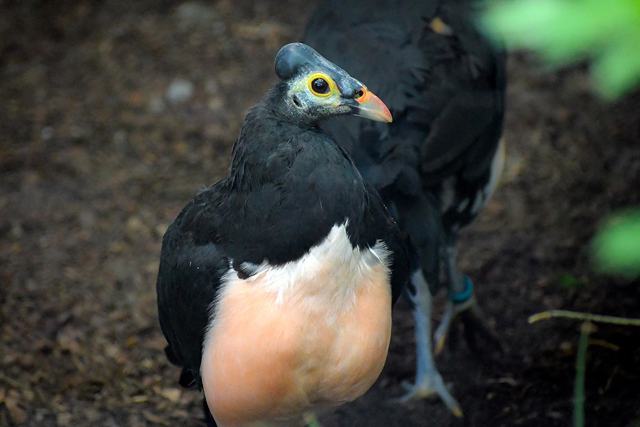
Conservation Status:
Critically Endangered
Fact:
The maleo is a large bird native to islands in Indonesia with black plumage and a pink-peach underbelly. Maleos are mound-builders and use their long legs to dig out a nest in the sand for their eggs.
Ostrich
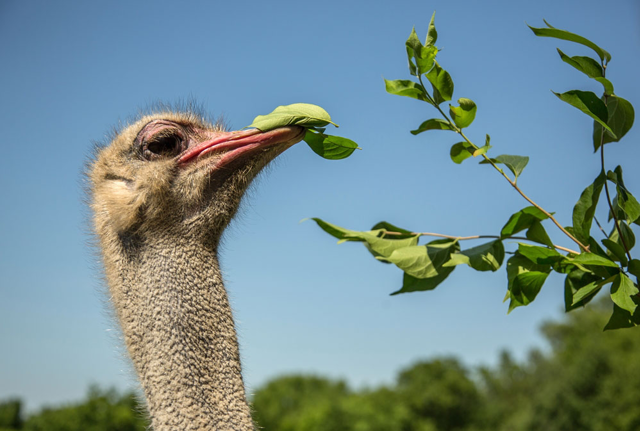
Conservation Status:
Least Concern
Fact:
The ostrich is the largest bird in the world. These flightless birds can run about 40 miles an hour covering 10-16 feet with a single stride. The ostrich will often use their wings as rudders to help change direction quickly while running.
Rhinoceros Hornbill

Conservation Status:
Vulnerable
Fact:
The rhinoceros hornbill is one of 54 species of hornbill and can be distinguished by its banana-shaped casque on the top of its beak. The casque is made out of keratin, just like human fingernails, and is very strong and lightweight.
Saddle-Billed Stork

Conservation Status:
Least Concern
Fact:
Saddle-billed storks are the tallest of all storks, and can be recognized by the yellow skin that covers the front of the bill like a “saddle.” The stork uses its pointed beak to repeatedly stab in open water or marshlands looking for prey.
Southern Crested Screamer
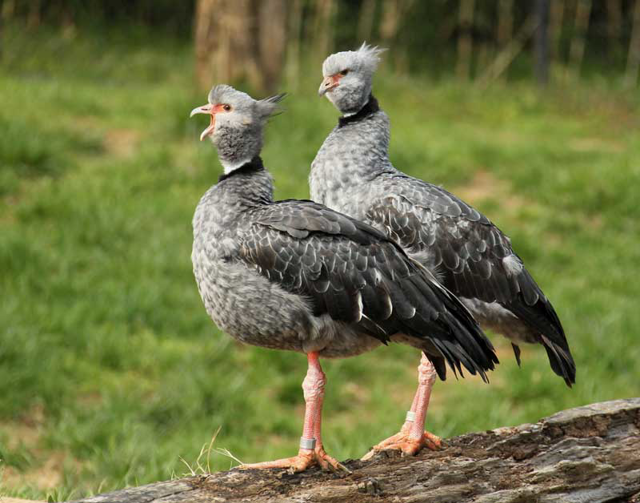
Conservation Status:
Least Concern
Fact:
Unlike other waterfowl, southern crested screamers do not have webbed feet, they have long toes that help them grab onto vegetation as they walk through flooded areas. Their name comes from their unique call which can carry for several miles.
Stanley Crane
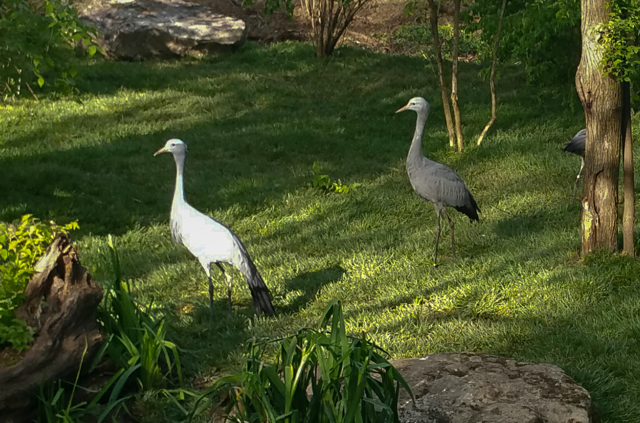
Conservation Status:
Vulnerable
Fact:
Stanley cranes are migratory birds that live in large flocks. Pairs of Stanley cranes will conduct elaborate mating dances which include running in circles, calling to each other, and throwing grass.
Tawny Frogmouth
---2021---kate-johns-(3)-web.jpg)
Conservation Status:
Least Concern
Fact:
The tawny frogmouth is a short, burly, carnivorous bird that is native to Australia. The name frogmouth comes from their wide olive-grey bill that is reminiscent of a frog. Many mistake these birds for owls with big yellow eyes and similar coloring.
Toco Toucan
-web.jpg)
Conservation Status:
Least Concern
Fact:
The toco toucan is one of the most recognizable tropical birds due to its beak that makes up about ⅓ of the bird's total length. The inside is mostly hollow, allowing the bird to regulate its body temperature by adjusting bloodflow to the beak.
Trumpeter Swan
-web.jpg)
Conservation Status:
Least Concern
Fact:
The trumpeter swan is the largest and heaviest native waterfowl in North America, weighing up to 30 lbs. These birds almost became extinct in the early 20th century, but due to conservation efforts, their numbers have been changing for the better.
White-Faced Whistling Duck
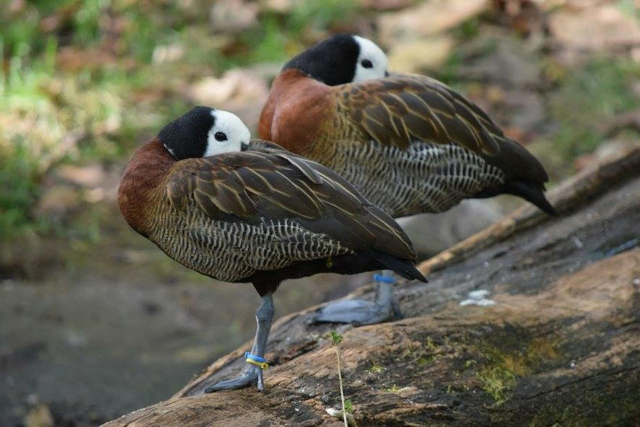
Conservation Status:
Least Concern
Fact:
The white-faced whistling duck is named for its bold pattern and unique call. Unlike most waterfowl, the white-faced whistling duck is known as a tree duck, as it often perches on branches rather than remaining on the ground.
Featured Animals

Alpaca
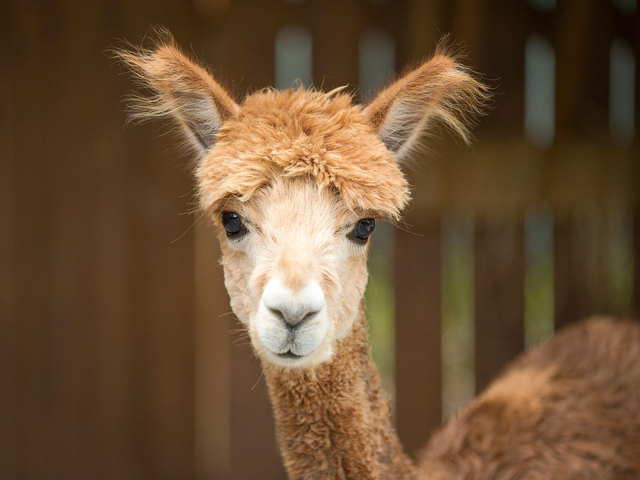
Conservation Status:
Least Concern
Fact:
The alpaca is a small relative of the camel and was domesticated thousands of years ago by Andean people for its wool. Alpaca fiber has a cellular structure similar to hair and is more resilient and much stronger than Merino sheep wool.
American Milking Devon
-web.png)
Conservation Status:
Critically Endangered
Fact:
Brought from England to the United States in the 17th century, American Milking Devon cattle are a multi-purpose breed. Due to modern farming and selective breeding, this breed is one of the most endangered cattle breeds in the world.
Andean Bear
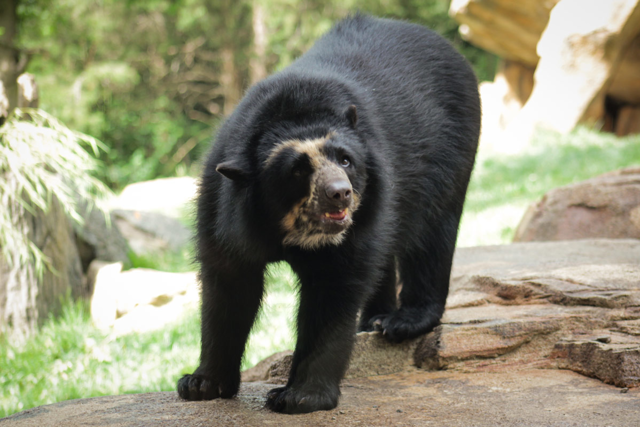
Conservation Status:
Vulnerable
Fact:
Andean bears, also known as spectacled bears, can be recognized by the rings of lightly-colored fur around their eyes. They are the only bears native to South America and are the most arboreal bear species in the world.
Baird's Tapir
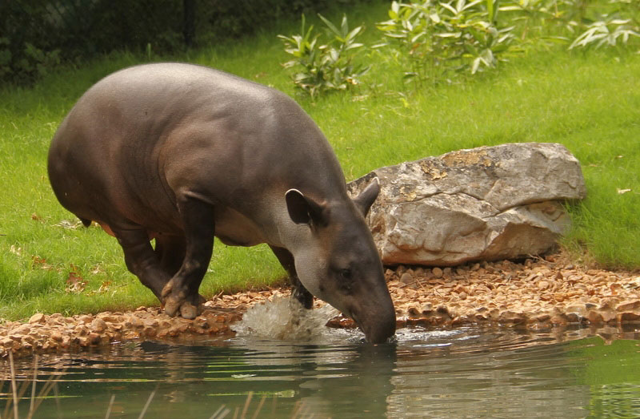
Conservation Status:
Endangered
Fact:
Baird's tapirs are native to the forests and wetlands of southern Mexico, Central America, and northwestern South America. Their upper lip forms a proboscis that is used to help them collect food and as a snorkel underwater.
Belted Galloway
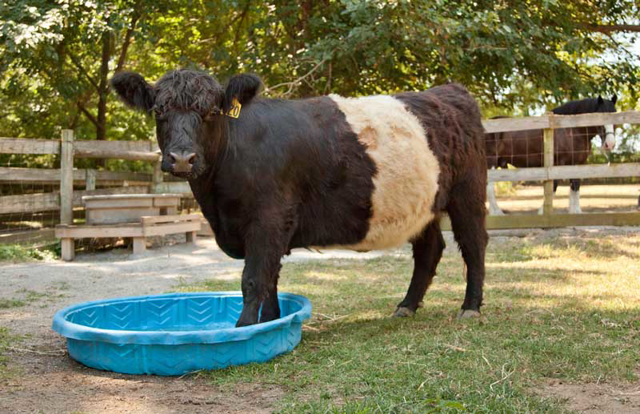
Conservation Status:
Not Evaluated
Fact:
Belted galloway were first brought to the US in the 1930s. Belted galloway are known to grow larger and produce more milk than other breeds and can sustain colder climates on marginal grasslands.
Bontebok

Conservation Status:
Vulnerable
Fact:
The bontebok is one of the rarest antelope in South Africa. Both sexes have their characteristic angular, ringed horns which can grow to 18 inches long. Their white facial markings are known as a threat mask and are intended to intimidate predators.
Cape Porcupine
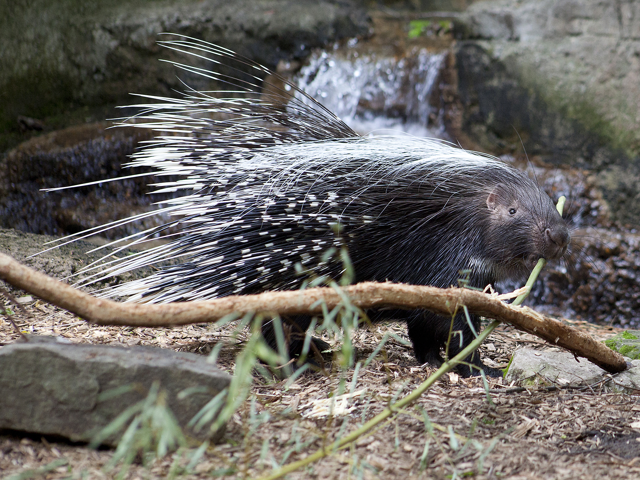
Conservation Status:
Least Concern
Fact:
Cape porcupines are the largest porcupine species and are native to central and southern Africa. Despite popular belief, porcupines can't shoot their quills. When threatened, they raise and rattle their quills, stomp their feet and click their teeth.
Clouded Leopard
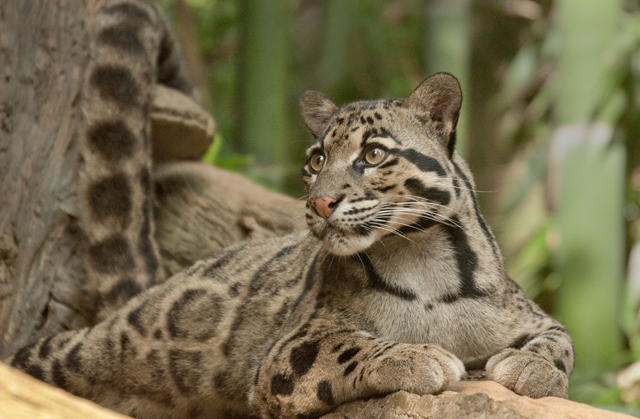
Conservation Status:
Vulnerable
Fact:
The clouded leopard is an elusive feline species native to the tropical lowlands of Southeast Asia in countries such as Nepal and Bangladesh. Clouded leopards are strong climbers and usually hunt and rest in trees.
Common Eland

Conservation Status:
Least Concern
Fact:
Eland are one of the largest hooved animals in the world but are one of the slowest antelope, running only 25 mph. Eland are very adaptable and can conserve water by raising its body temperature as much as 13.5° Fahrenheit on hot days.
Cotswold Sheep
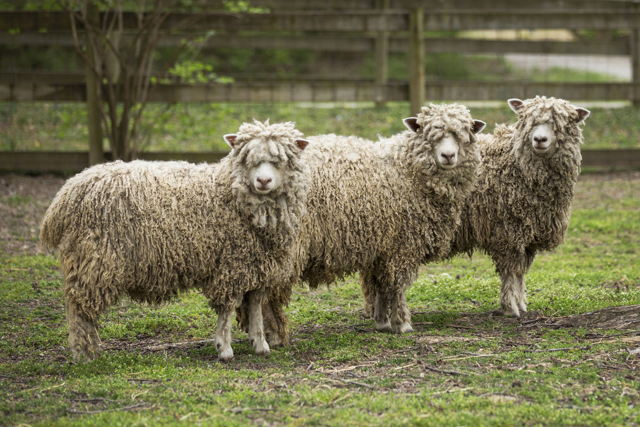
Conservation Status:
Not Evaluated
Fact:
Cotswold sheep originated in England and are a long wooled breed well-adapted to areas with high rainfall. The sheep can grow 10-12 inches of wool per year and their curly white wool is popular with handspinners who turn the wool into thread.
Cotton-top Tamarin
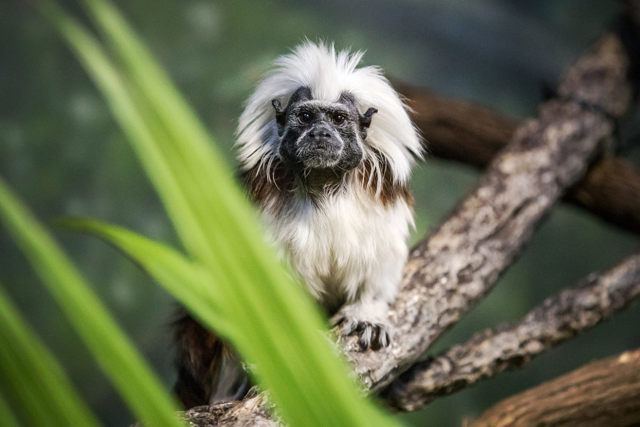
Conservation Status:
Critically Endangered
Fact:
The cotton-top tamarin is one of the most endangered South American primates and gets its name from the mane of white fur around its face. These social primates live in family groups and both sexes participate in the care of young.
Cougar

Conservation Status:
Least Concern
Fact:
Cougars, also known as pumas or mountain lions, are solitary animals most active at night. Their geographic range is the largest of any terrestrial mammal in the Western Hemisphere, stretching from Canada to Chile.
Goats
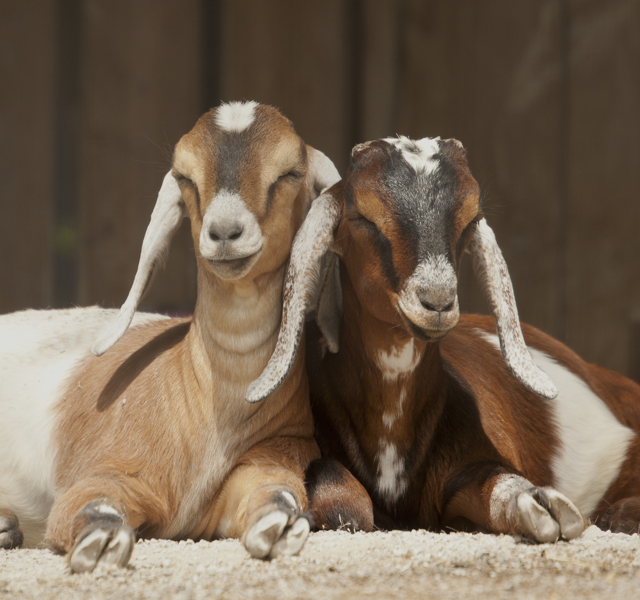
Conservation Status:
Not Evaluated
Fact:
Goats were domesticated for agricultural purposes more than 10,000 years ago. Despite popular belief, goats will not eat everything, but they are extremely curious and will chew on new things to figure out what they are.
Guinea Pig
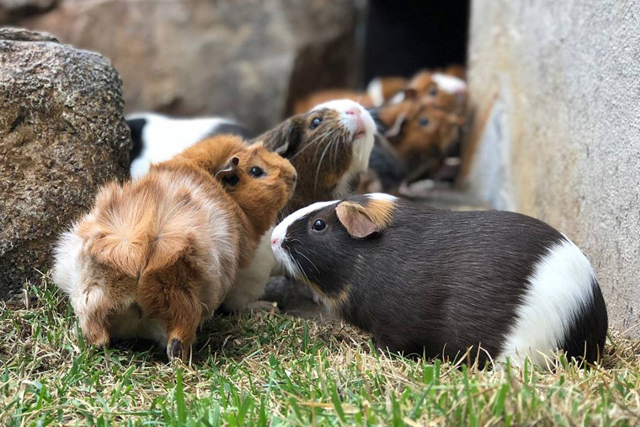
Conservation Status:
Least Concern
Fact:
Though they no longer exist in the wild, guinea pigs are rodents indigenous to South America. Domestication began around 5,000 B.C. for food by tribes in the Andean region and remain a popular food source in South America today.
Juliana Pig
-web.png)
Conservation Status:
Not Evaluated
Fact:
Juliana pigs are highly intelligent, social animals with an advanced sense of smell. They have a large head, flat snout, and short coarse hair called bristles. With spots all over their body, they are also sometimes known as “miniature painted pigs.”
Meerkat
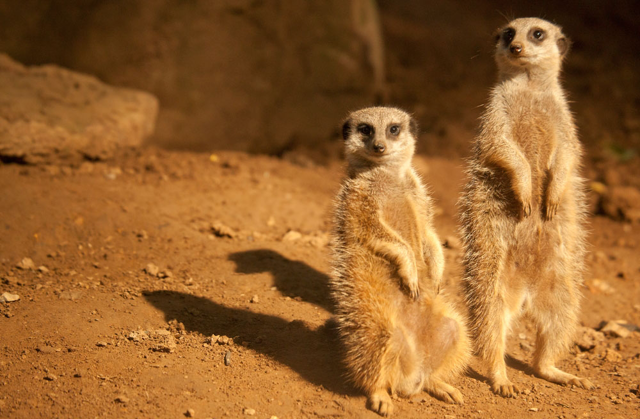
Conservation Status:
Least Concern
Fact:
Native to southern Africa, meerkats live in underground burrow systems in large social groups called mobs. These groups are key to their survival, with one member always on "sentry duty" looking out for predators.
Mexican Spider Monkey

Conservation Status:
Endangered
Fact:
Mexican spider monkeys are native to the rainforests of Central America. Spider monkeys get their common name for their long, spidery limbs and prehensile tail, which can support their entire weight and is often used as a third arm for movement.
Miniature Donkey
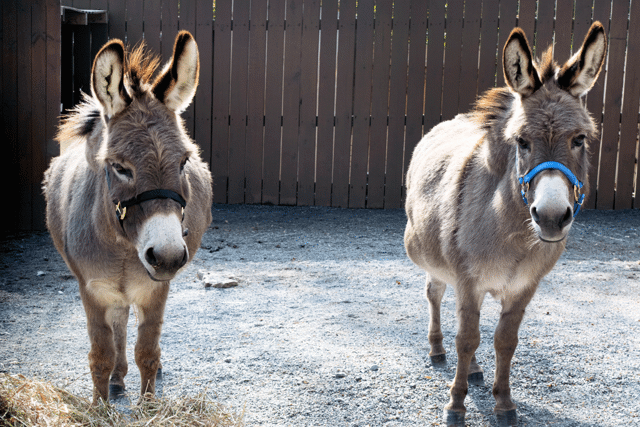
Conservation Status:
Not Evaluated
Fact:
Originally from islands in the Mediterranean Sea, miniature donkeys are intelligent, friendly animals that were bred to be tough, trainable and small for work and transport purposes.
Miniature Horse
-web.png)
Conservation Status:
Not Evaluated
Fact:
Miniature horses are less than 34 inches tall but are extremely strong and can pull carts and objects up to their own weight.
Plains Zebra
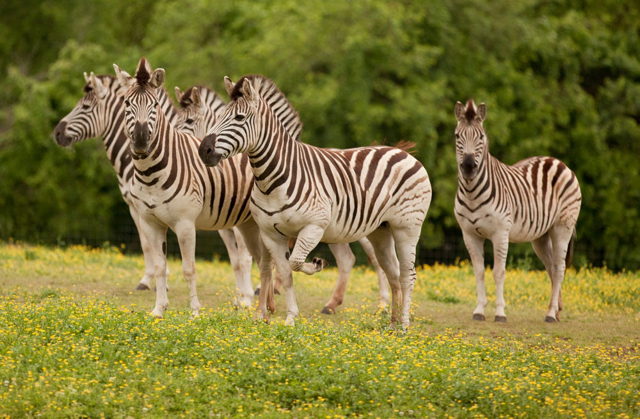
Conservation Status:
Near Threatened
Fact:
The plains zebra is the most abundant and the smallest of the three zebra species. Different zebra species have different types of stripes, from narrow to wide. Each individual zebra has a unique pattern of stripes as well!
Red Kangaroo
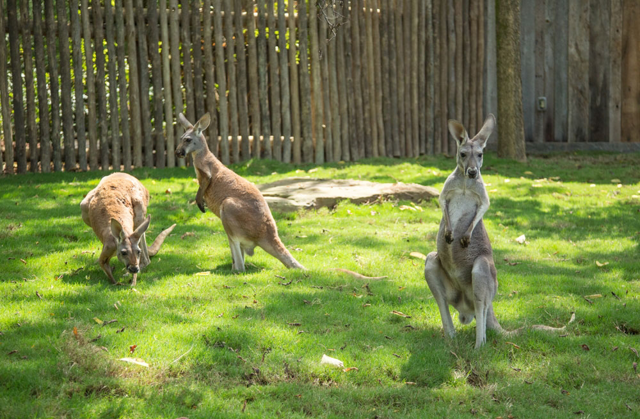
Conservation Status:
Least Concern
Fact:
Red kangaroos are the largest marsupials and the largest mammals in Australia. Females use their pouch to carry joeys until they leave the pouch after about 235 days. They can run 40 miles per hour, jump 30 feet long, and 10 feet high.
Red Panda
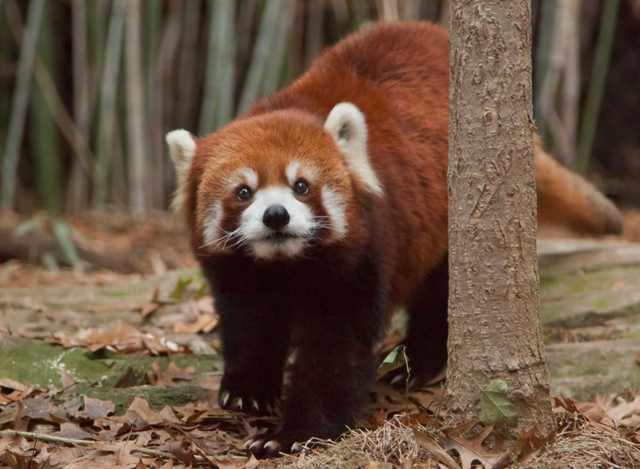
Conservation Status:
Endangered
Fact:
Red pandas are native to mountainous regions of southwestern Asia. They were once thought to be related to raccoons and giant pandas, but research has now put them in their own animal family, Ailuridae.
Red River Hog
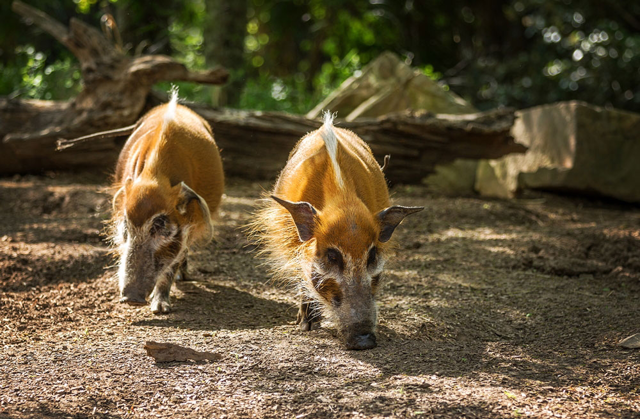
Conservation Status:
Least Concern
Fact:
Red river hogs live in groups of up to 20, usually consisting of one adult male, several females and their piglets. They use their shovel-like snouts to dig up roots or bulbs to eat, though they will eat almost anything they find!
Red Ruffed Lemur
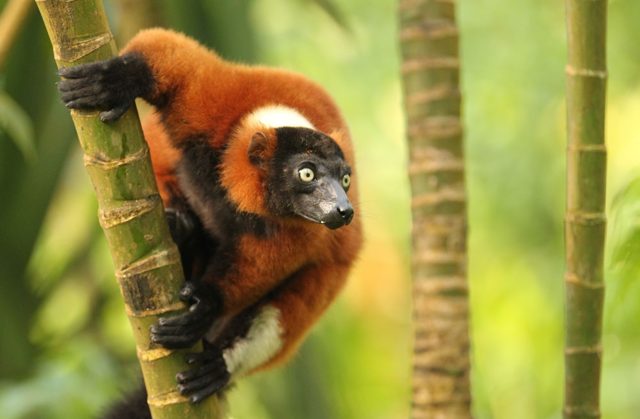
Conservation Status:
Critically Endangered
Fact:
Red ruffed lemurs are one of 100+ lemur species native to Madagascar. Red ruffed lemurs are mostly arboreal and communicate with other members of their group through more than 12 different calls.
Ring-Tailed Lemur
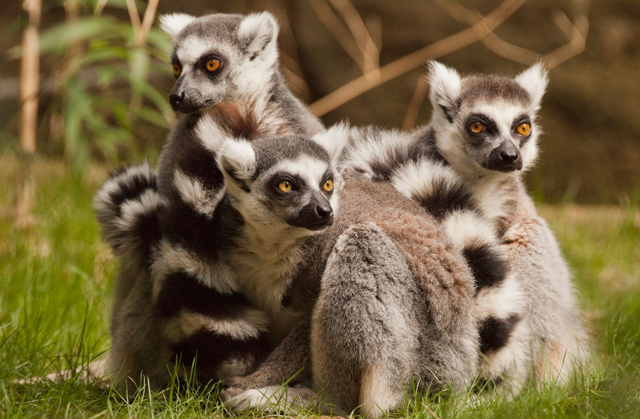
Conservation Status:
Endangered
Fact:
With their iconic black and white striped tail, ring-tailed lemurs are one of the most recognizable lemur species. Their tails are used as a visual signal to help keep the troop together and are waved like a warning flag when they encounter a rival group of lemurs.
Short-Tailed, Leaf-Nosed Bat
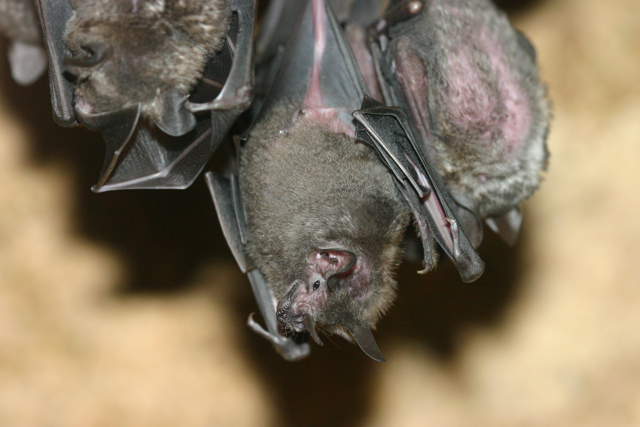
Conservation Status:
Least Concern
Fact:
Short-tailed, leaf-nosed bats are found from Mexico into South America. These fruit bats are very important to the ecosystems in which they live, as they help to disperse seeds and pollinate many of the plants.
Siamang
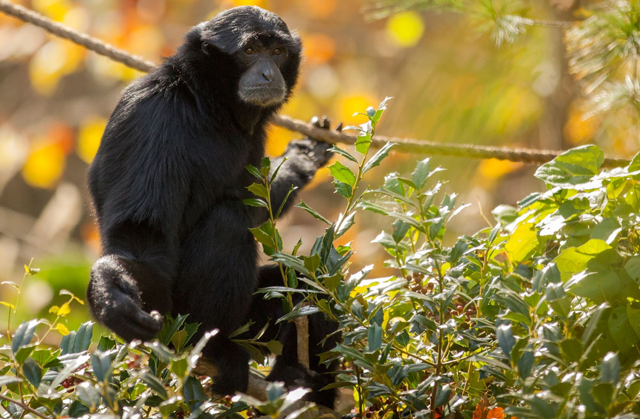
Conservation Status:
Endangered
Fact:
Siamangs are the largest of the lesser ape species and are one of few primates known to form permanent pairs. Siamang can carry things with their hands and feet thanks to having opposable thumbs and an opposable toe on each foot.
Southern Pudu
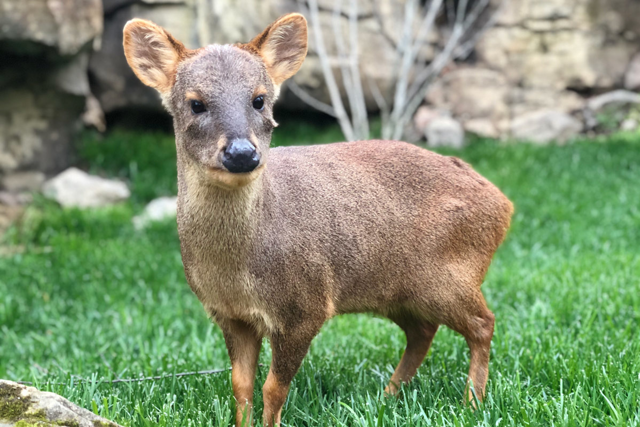
Conservation Status:
Near Threatened
Fact:
Southern pudu are one of the world's smallest deer, measuring just 14-17 in. in height at the shoulder. Pudu play a vital role in their habitat, by building tunnels in the underbrush, allowing other small animals to remain undetected by predators.
Southern White Rhinoceros
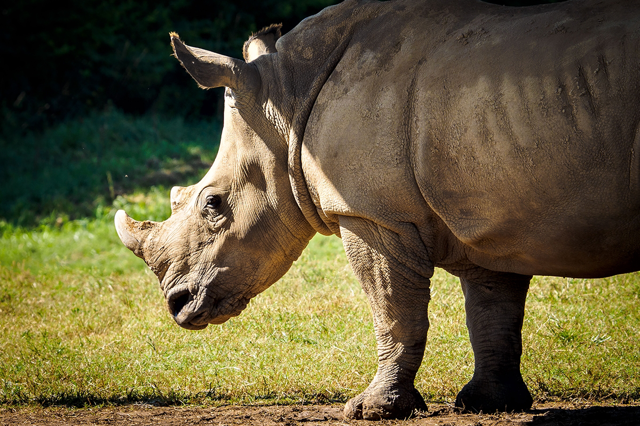
Conservation Status:
Near Threatened
Fact:
Native to southern Africa, southern white rhinos can be identified by their “square lip” which enables them to graze on 120+ lbs of grasses per day. Rhinos are being poached at an alarming rate because of the perceived value of their horns.
Sulawesi Babirusa
-web.jpg)
Conservation Status:
Vulnerable
Fact:
Babirusa, meaning “pig-deer” in the Malay language, is a member of the pig family and is closely related to the hippopotamus. Babirusa is the fastest member of the pig family; it can run as fast as the deer giving it the nickname.
Sumatran Tiger
-web.jpg)
Conservation Status:
Critically Endangered
Fact:
Native to Indonesia, Sumatran tigers are the smallest subspecies of tigers, weighing up to 300 pounds and measuring up to 8 feet long. Sumatran tigers are territorial and generally live on their own except when coming together for courtship.
Two-Toed Sloth

Conservation Status:
Least Concern
Fact:
Two-toed sloths have two toes with claws on the front feet and three toes on the back feet. Sloths spend almost their entire life upside down in trees, but are actually great swimmers and will swim across rivers doing the breaststroke.
White-Cheeked Gibbon
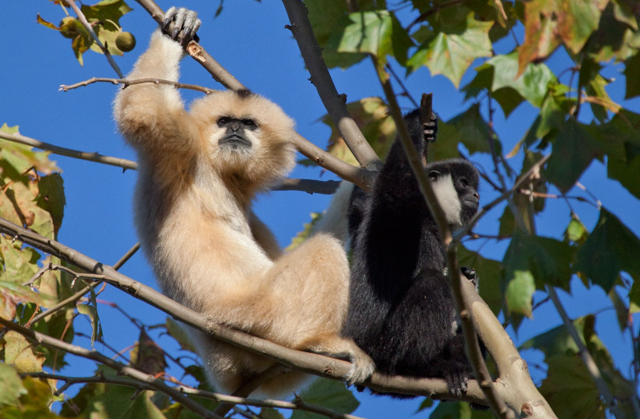
Conservation Status:
Critically Endangered
Fact:
White-cheeked gibbons are born blonde to camouflage with their mother and then turn black as juveniles. Females finally turn back to a blonde color at sexual maturity while the males stay black.
Featured Animals

Aldabra Tortoise
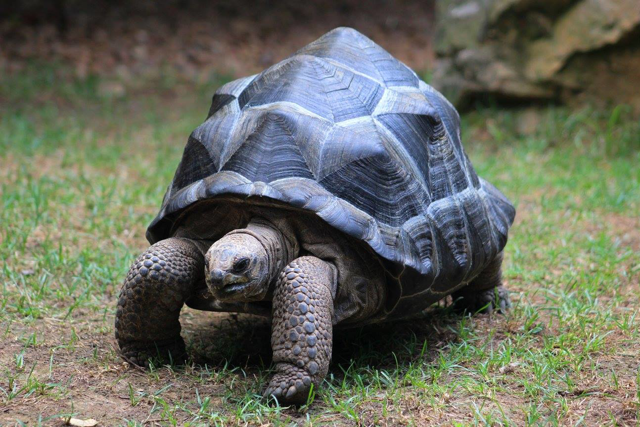
Conservation Status:
Vulnerable
Fact:
Aldabra tortoises are one of the world's largest tortoises and are found only on Aldabra Island in the Indian Ocean. They are the main consumers of vegetation in their habitats and help smaller species reach vegetation by knocking it over as they feed.
Alligator Snapping Turtle
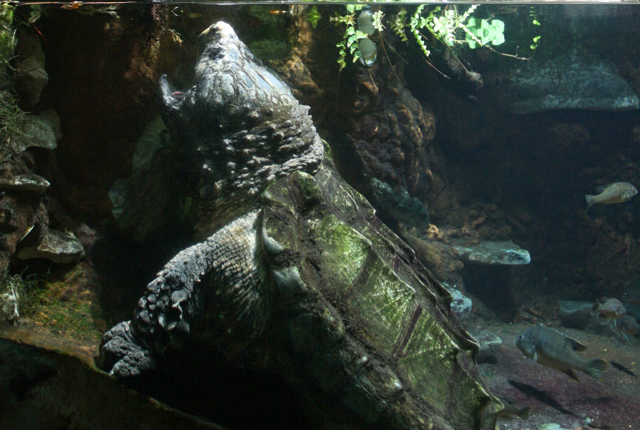
Conservation Status:
Vulnerable
Fact:
Alligator snapping turtles are the largest freshwater turtle. These turtles are ambush predators, and they hunt by lying motionless and luring prey into their mouth with a worm-like appendage on their tongues.
American Alligator
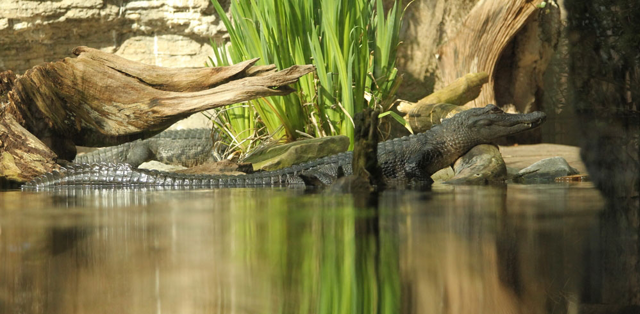
Conservation Status:
Least Concern
Fact:
The American alligator was on the verge of extinction in the 1970s but has since made a remarkable recovery thanks to cooperative efforts between scientists, government agencies and communities sharing space in alligator habitats.
Caiman Lizard
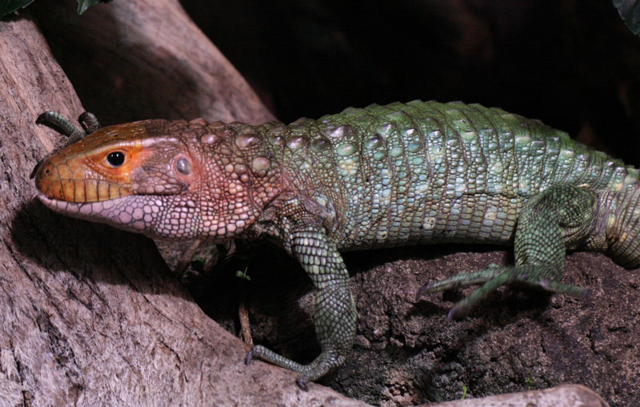
Conservation Status:
Least Concern
Fact:
Caiman lizards are native to the swamps of South America. These lizards are considered semiaquatic and are both excellent swimmers and climbers. They are equipped with a third, clear eyelid which can act like a goggle underwater.
Dwarf Caiman
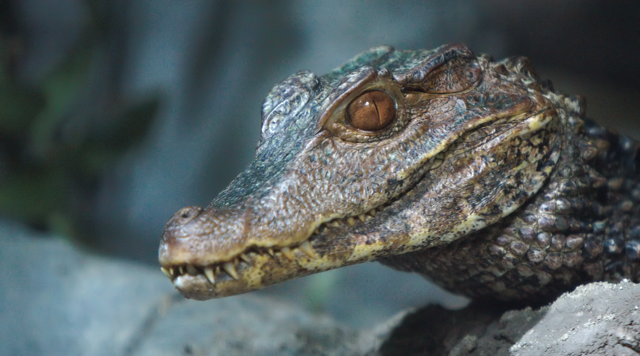
Conservation Status:
Least Concern
Fact:
Dwarf caiman are the smallest species of crocodilian and are native to South America. They are mainly nocturnal, spending the day in a burrow and hunting at night.
Eastern Diamondback Rattlesnake
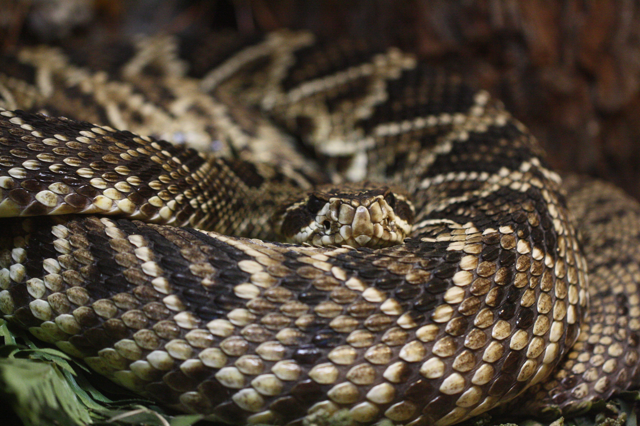
Conservation Status:
Least Concern
Fact:
The eastern diamondback rattlesnake is North America's largest venomous snake and are equipped with a rattle to warn off anyone who might come too close. Unless threatened, they reserve their venomous bite for prey species such as rats and mice.
Eyelash Palm Pit Viper
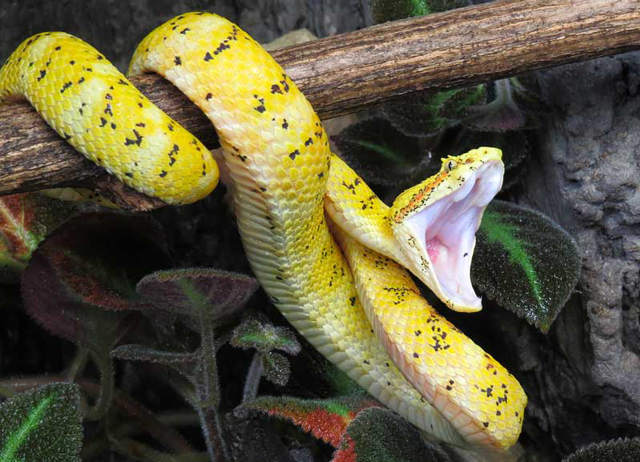
Conservation Status:
Least Concern
Fact:
Eyelash palm pit vipers are named for the distinctive scales above their eyes. The exact use of which is unknown, though it is believed that they help protect the venomous snake’s eyes as it travels through vegetation.
Galapagos Tortoise
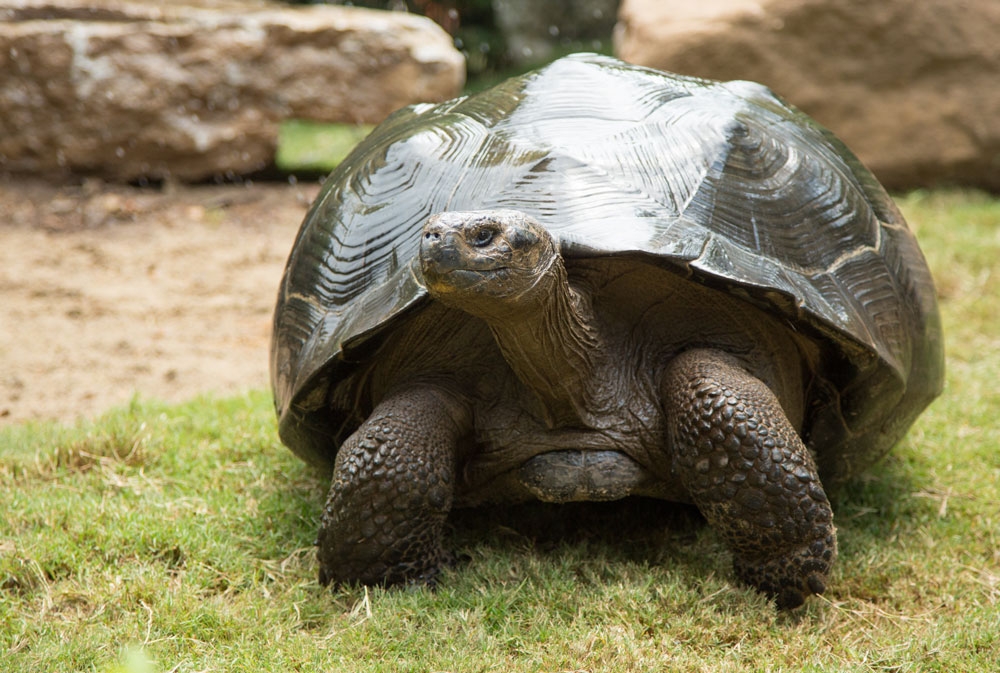
Conservation Status:
Vulnerable
Fact:
The Galapagos tortoise is the world's largest tortoise and can only be found in the Galapagos Islands west of South America. Their life span is largely unknown, but one individual was recorded as living 177 years in human care.
Gila Monster
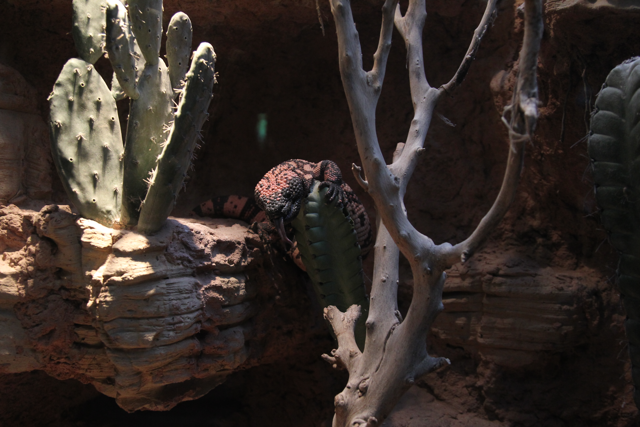
Conservation Status:
Near Threatened
Fact:
The Gila monster is the largest lizard native to the U.S. and is closely related to the Mexican beaded lizard, both of which are venomous. Unlike snakes who inject their venom, Gila monsters chew on their prey to get their venom into open wounds.
Green Anaconda

Conservation Status:
Least Concern
Fact:
The green anaconda is the heaviest snake in the world averaging over 20 feet in length, 300 pounds in weight, and over 12 inches across. These snakes are apex predators that will eat anything in their habitat they can constrict and eat.
Green Crested Basilisk
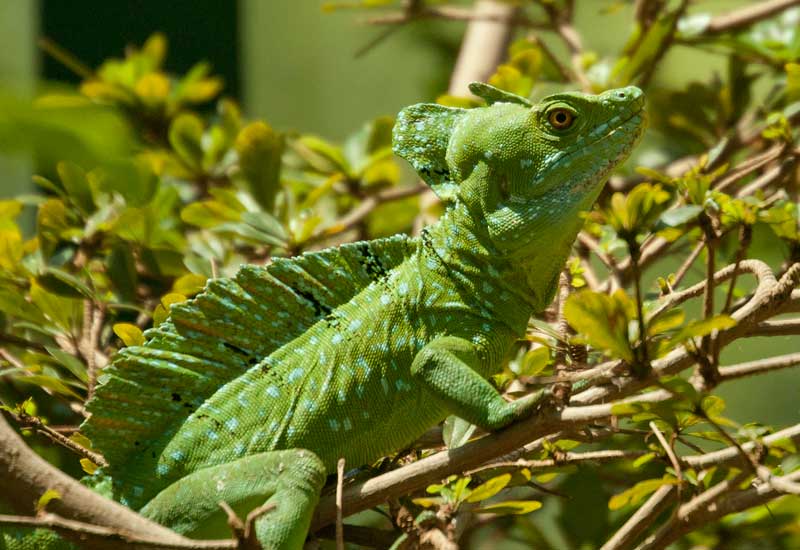
Conservation Status:
Least Concern
Fact:
Green crested basilisks most often live near water. Thanks to their speed, ability to run on their hind legs, and special scales on their feet, they are able to sprint at 7 mph across the surface of water!
Haitian Giant Galliwasp
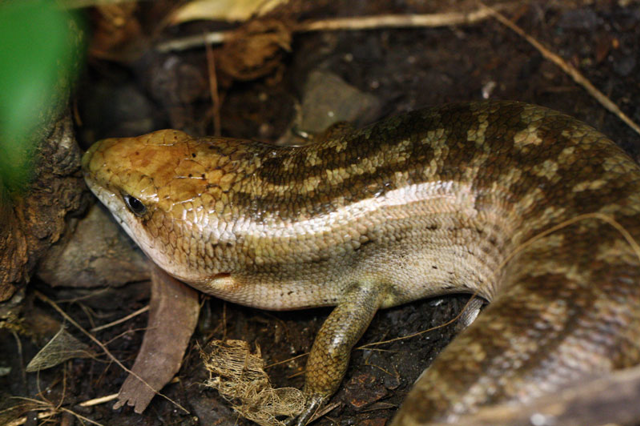
Conservation Status:
Vulnerable
Fact:
The Haitian giant galliwasp is native to northern Haiti and is now only found in a small protected area. Nashville Zoo is a leader in breeding and husbandry for the species and maintains a reserve colony of galliwasps at the Zoo.
Indigo Snake
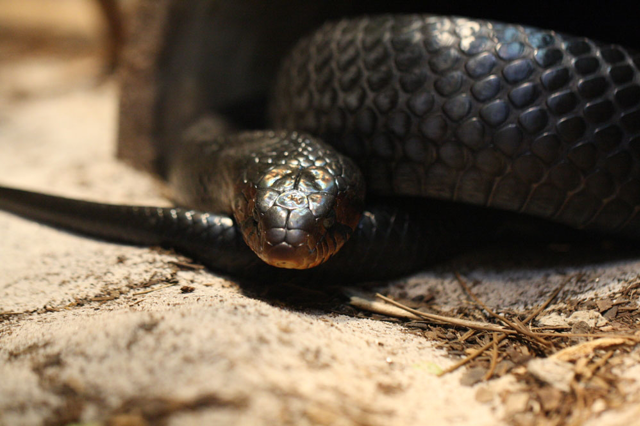
Conservation Status:
Least Concern
Fact:
Measuring up to 8.5 feet, the indigo snake is the longest snake native to the United States. Neither venomous nor a constrictor, it uses its muscular jaws to overpower prey. The snake is an apex predator and has been known to eat venomous snakes.
Komodo Dragon
.jpg)
Conservation Status:
Endangered
Fact:
When they hatch, Komodo dragons are about 10-13 inches long and yellow, green, and black. By 10 years of age, they will be 7-9 feet and can weigh almost 300 pounds and be a dull gray or brown.
Mata Mata
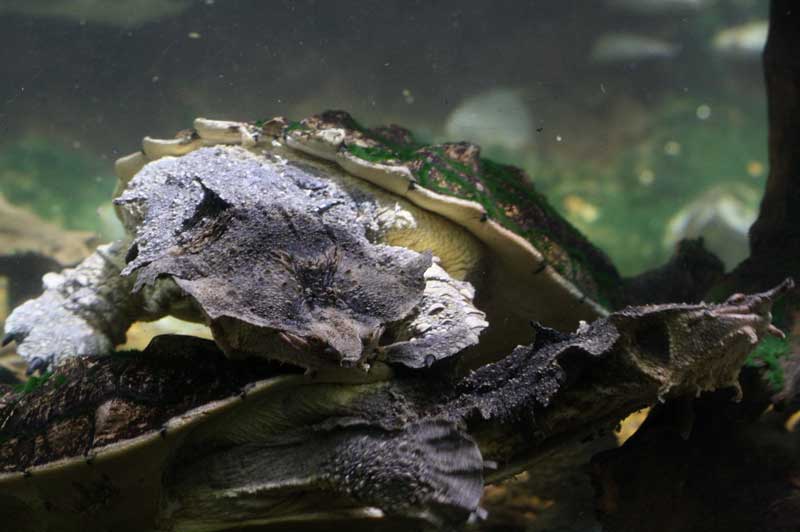
Conservation Status:
Least Concern
Fact:
The unique look of the mata mata provides great camoflauge for hunting. When prey is within striking distance, the mata mata opens its mouth so fast the prey is sucked in with a rush of water.
Mexican Beaded Lizard
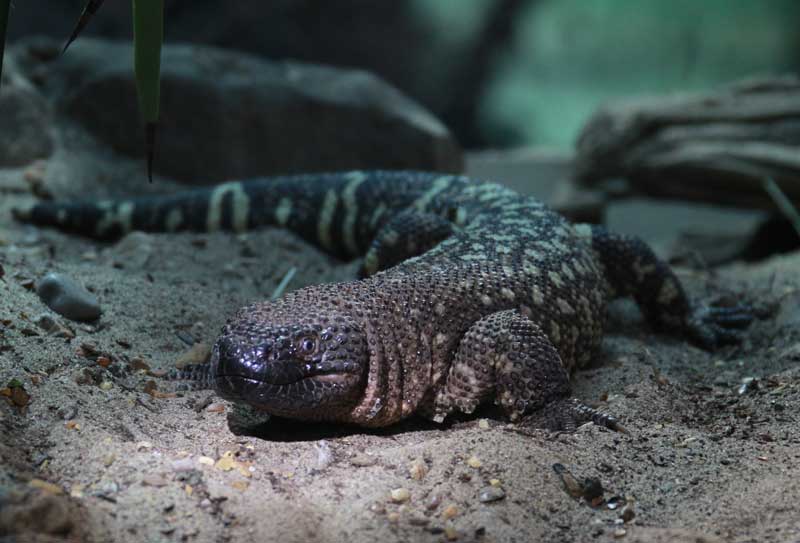
Conservation Status:
Least Concern
Fact:
Beaded lizards are one of two venomous lizards and their venom is released via grooved pits in their teeth. Beaded lizards will spend about 95% of their day hidden in shelters only foraging at night in the summer and during the day in cooler months.
Northern Copperhead
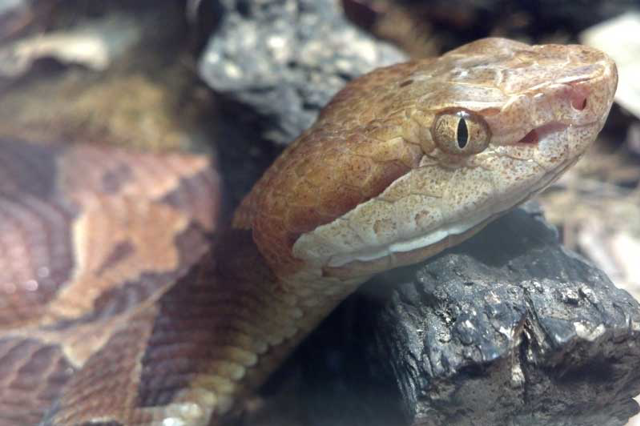
Conservation Status:
Least Concern
Fact:
Copperheads are social snakes and can be found in groups near eating, drinking, sunning, and courting sites. Copperheads are venomous and can be identified by the reddish “saddles” on their back.
Rhinoceros Iguana
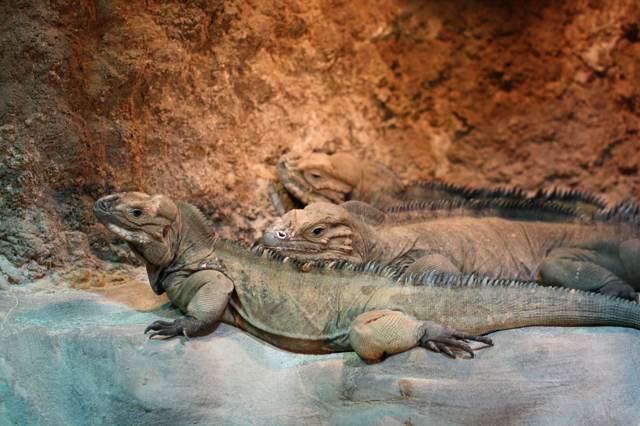
Conservation Status:
Endangered
Fact:
Native to the island of Hispaniola and surrounding islands, the rhinoceros iguana gets its name from the bumps on its snout which are most pronounced on male iguanas.
South American Bushmaster
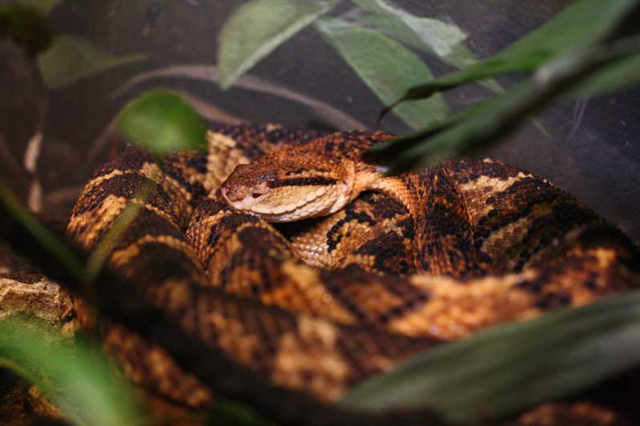
Conservation Status:
Least Concern
Fact:
Bushmasters are ambush predators concealing themselves in areas of high small mammal traffic waiting to strike. They use heat sensitive pits to detect temperature changes of as little as 0.0036 degrees within 20 inches of the snake.
Yellow Blotched Map Turtle

Conservation Status:
Vulnerable
Fact:
The yellow blotched map turtle is one of ten species of map turtles, which are named for the map-like markings on their shells and are found only in the eastern United States.
Yellow-spotted Amazon Turtle
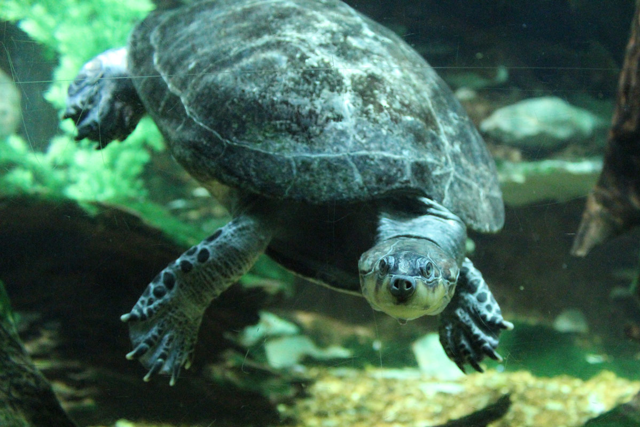
Conservation Status:
Vulnerable
Fact:
The aptly named yellow-spotted Amazon turtles can be recognized by the yellow spots on their heads, which fade with maturation in females but remain present in adult males.



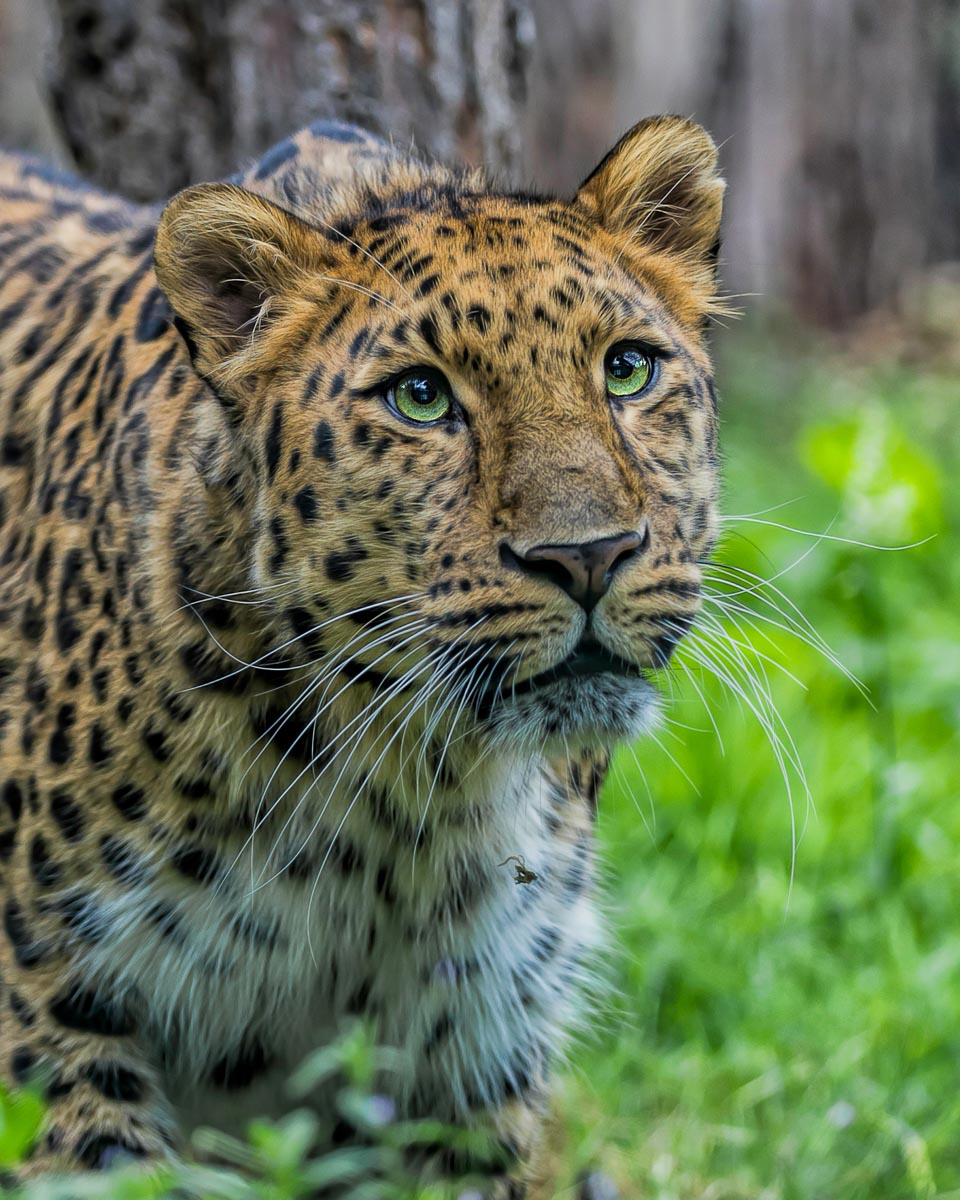
.jpg)